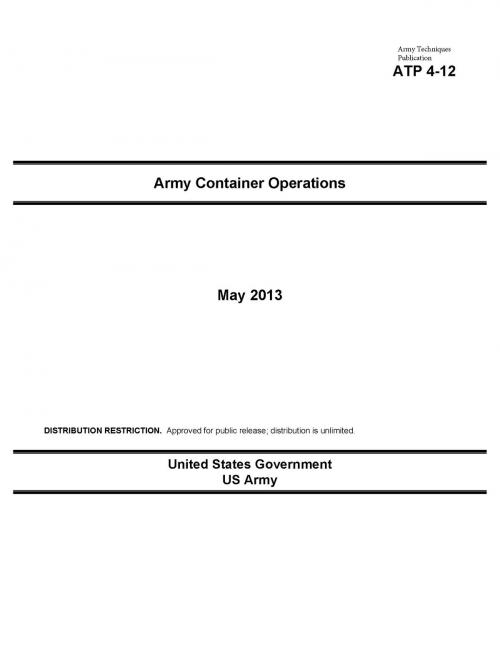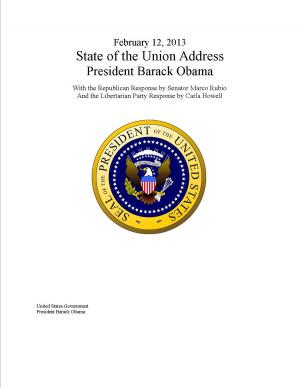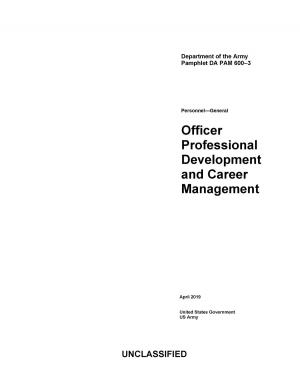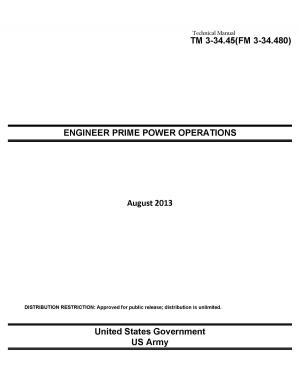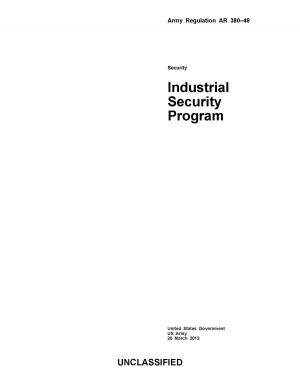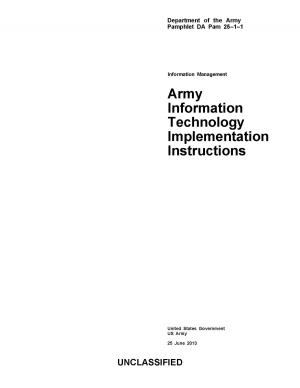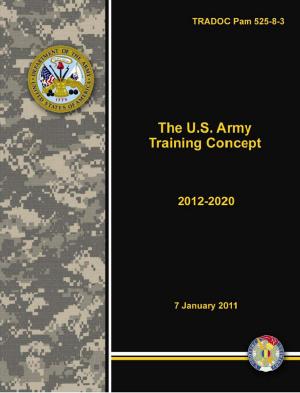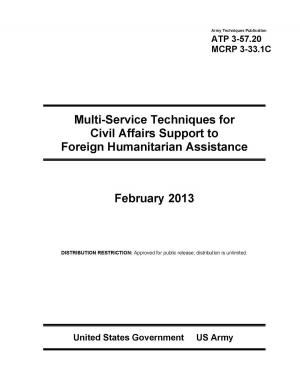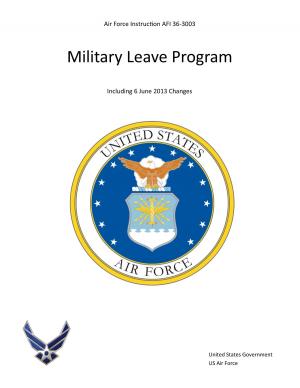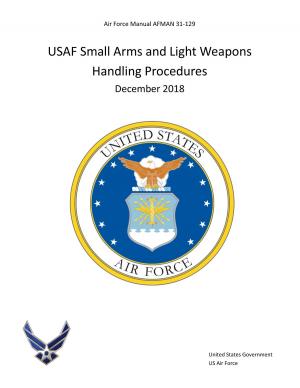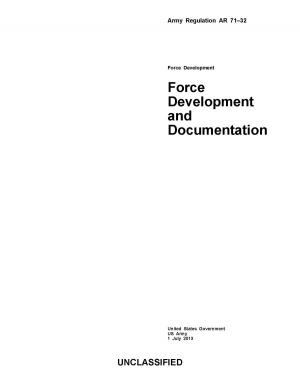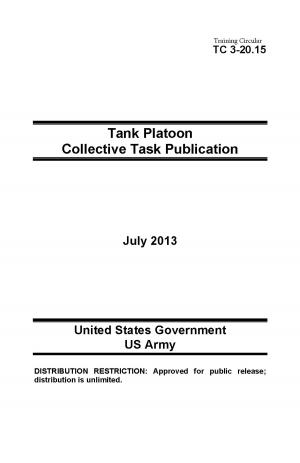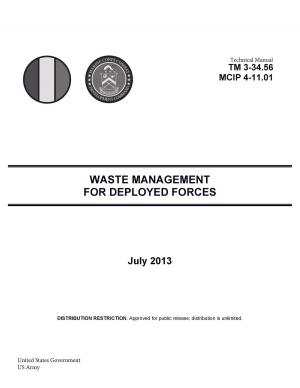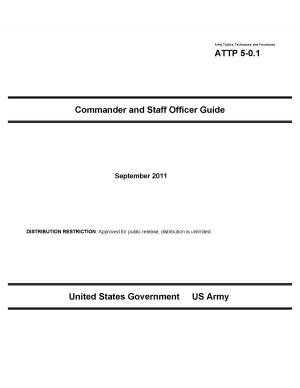Army Techniques Publication ATP 4-12 Army Container Operations May 2013
Business & Finance, Industries & Professions, Distribution, Nonfiction, Science & Nature, Technology, Military Science, Reference & Language, Transportation| Author: | United States Government US Army | ISBN: | 1230000137631 |
| Publisher: | eBook Publishing Team | Publication: | June 1, 2013 |
| Imprint: | Language: | English |
| Author: | United States Government US Army |
| ISBN: | 1230000137631 |
| Publisher: | eBook Publishing Team |
| Publication: | June 1, 2013 |
| Imprint: | |
| Language: | English |
Army Techniques Publication (ATP) 4-12 augments the sustainment doctrine established in Army Doctrine Publication (ADP) 4-0, Sustainment. It constitutes the Army’s view of how the Army manages containers on land and sets the foundation for developing additional tactics, techniques, and procedures. It also forms the basis for Army training and education system curricula.
The principal audience for ATP 4-12 is all members of the profession of arms. Commanders and staffs of Army headquarters serving as joint task force or multinational headquarters should also refer to applicable joint or multinational doctrine concerning the range of military operations and joint or multinational forces. Trainers and educators throughout the Army will also use this manual.
ATP 4-12 applies to the Active Army, Army National Guard/Army National Guard of the United States, and
United States Army Reserve unless otherwise stated.
Army Techniques Publication (ATP) 4-12, Container Operations, is the Army’s doctrine for container management during operations. The doctrine discussed in this manual is nested with ADRP 4-0, Sustainment, and describes the techniques for conducting container management. Container management supports operations and ensures that unit equipment and supplies are delivered in a timely and secure manner to the intended destination. Proper container management can drastically reduce detention and demurrage charges that may burden operations.
Containers are crucial to the success of operations. Containers provide a secure means of transporting cargo, and are an effective means of in-transit storage as they prevent materiel from exposure to the weather. In a theater, containers will be used from the port to as far forward as possible and must be managed while used in theater.
Container management must be planned, synchronized and executed within operations at each level of command. Commanders at each level are responsible for managing containers within their possession or operational area. Commanders are required to know the difference between managing government owned and commercially leased containers. This is due to potential detention and demurrage charges that can be accrued on leased containers.
ATP 4-12 contains significant change from Field Manual 55-80, Army Container Operations. The most significant changes are the new container management principles. It also includes an added focus on container management from the strategic to tactical levels. ATP 4-12 provides updated terminology relevant to today’s force along with information on current automated information systems used in container management.
ATP 4-12 contains four chapters:
Chapter 1 discusses the principles of container management and defines the roles and responsibilities of organizations involved in container management. It establishes each of the categories of three types of containers.
Chapter 2 describes the planning considerations required for using containers. This chapter explains the combatant commander’s role in establishing container requirements for operations. It explains how units plan for container movement, and how containers are procured. It establishes the Army Intermodal Distribution Platform Management Office as the manager of the Army container leasing program.
Chapter 3 describes how container management is conducted in theater. This chapter describes the roles and responsibilities of the country container authority and container control officer. It also discusses how containers move the distribution and defense transportation system and return to the point of origin.
Chapter 4 describes the automated systems that are used to provide in-transit visibility and account for containers within the Army’s inventory. It details the capability of each system and how they support container management.
Army Techniques Publication (ATP) 4-12 augments the sustainment doctrine established in Army Doctrine Publication (ADP) 4-0, Sustainment. It constitutes the Army’s view of how the Army manages containers on land and sets the foundation for developing additional tactics, techniques, and procedures. It also forms the basis for Army training and education system curricula.
The principal audience for ATP 4-12 is all members of the profession of arms. Commanders and staffs of Army headquarters serving as joint task force or multinational headquarters should also refer to applicable joint or multinational doctrine concerning the range of military operations and joint or multinational forces. Trainers and educators throughout the Army will also use this manual.
ATP 4-12 applies to the Active Army, Army National Guard/Army National Guard of the United States, and
United States Army Reserve unless otherwise stated.
Army Techniques Publication (ATP) 4-12, Container Operations, is the Army’s doctrine for container management during operations. The doctrine discussed in this manual is nested with ADRP 4-0, Sustainment, and describes the techniques for conducting container management. Container management supports operations and ensures that unit equipment and supplies are delivered in a timely and secure manner to the intended destination. Proper container management can drastically reduce detention and demurrage charges that may burden operations.
Containers are crucial to the success of operations. Containers provide a secure means of transporting cargo, and are an effective means of in-transit storage as they prevent materiel from exposure to the weather. In a theater, containers will be used from the port to as far forward as possible and must be managed while used in theater.
Container management must be planned, synchronized and executed within operations at each level of command. Commanders at each level are responsible for managing containers within their possession or operational area. Commanders are required to know the difference between managing government owned and commercially leased containers. This is due to potential detention and demurrage charges that can be accrued on leased containers.
ATP 4-12 contains significant change from Field Manual 55-80, Army Container Operations. The most significant changes are the new container management principles. It also includes an added focus on container management from the strategic to tactical levels. ATP 4-12 provides updated terminology relevant to today’s force along with information on current automated information systems used in container management.
ATP 4-12 contains four chapters:
Chapter 1 discusses the principles of container management and defines the roles and responsibilities of organizations involved in container management. It establishes each of the categories of three types of containers.
Chapter 2 describes the planning considerations required for using containers. This chapter explains the combatant commander’s role in establishing container requirements for operations. It explains how units plan for container movement, and how containers are procured. It establishes the Army Intermodal Distribution Platform Management Office as the manager of the Army container leasing program.
Chapter 3 describes how container management is conducted in theater. This chapter describes the roles and responsibilities of the country container authority and container control officer. It also discusses how containers move the distribution and defense transportation system and return to the point of origin.
Chapter 4 describes the automated systems that are used to provide in-transit visibility and account for containers within the Army’s inventory. It details the capability of each system and how they support container management.
